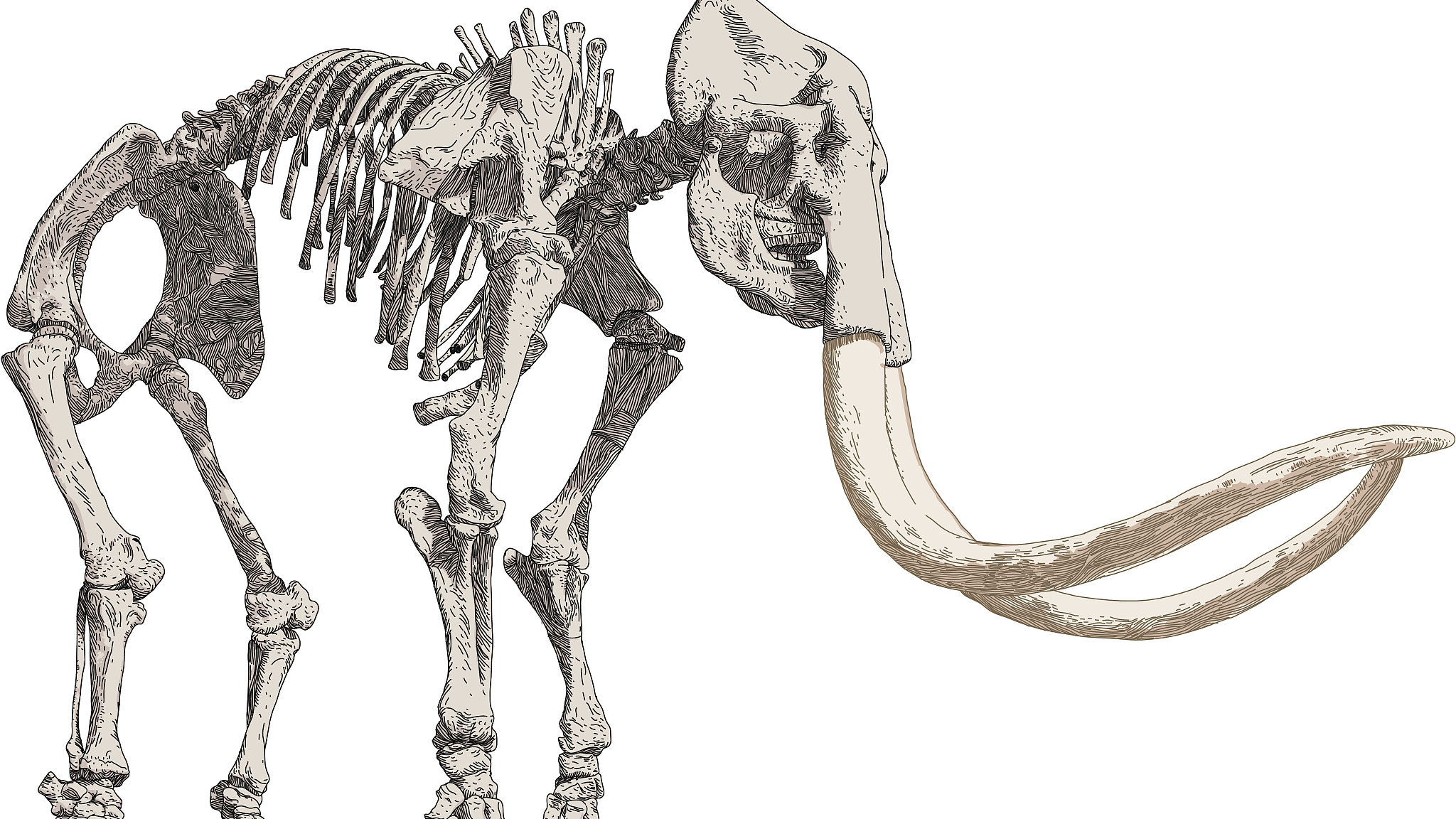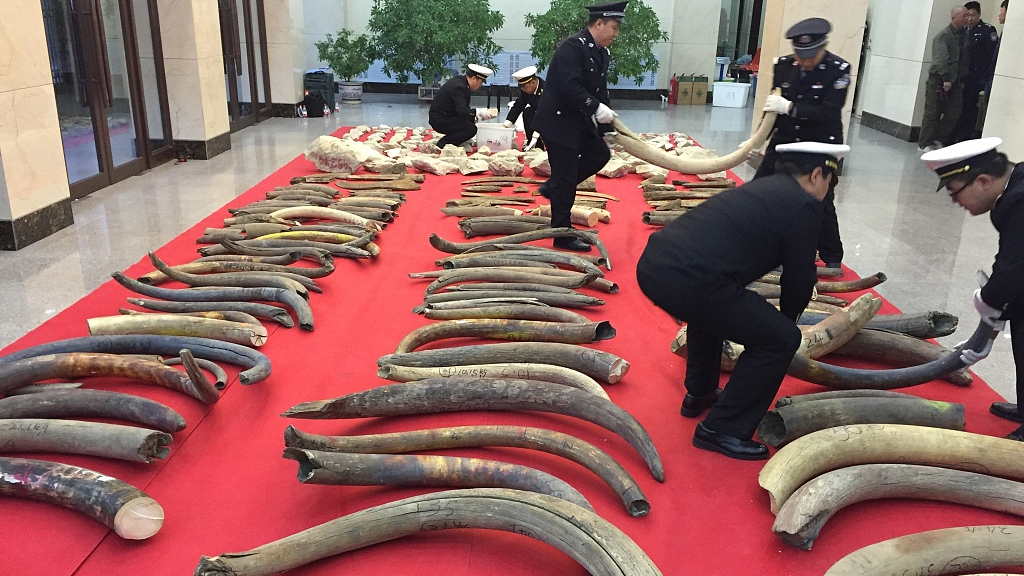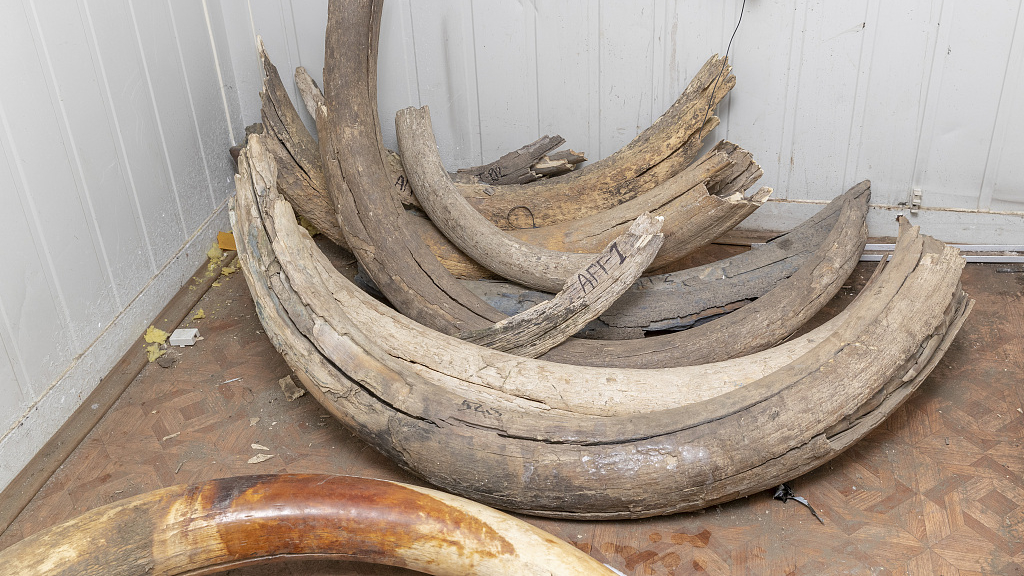

Woolly mammoth. /VCG Photo
If you have ever watched the movies in the "Ice Age" series, you must know the guy in the picture above: A woolly mammoth, an ancient mammal that lived during the Pleistocene to early Holocene epoch.
Scientists say that the woolly mammoth has been extinct for 4,000 years now. But it may be listed as "endangered" in the year 2019. Why?

Skeleton of a mammoth. Its remarkable tusks could be as long as five meters. /VCG Photo
The proposal for listing the woolly mammoth as an "endangered" species was put up on the 18th meeting of the Conference of the Convention on International Trade in Endangered Species of Wild Fauna and Flora (CITES), an international agreement between governments to ensure the trade of wild animals and plants does not threaten their survival.
According to CITES documents, Israel submitted the nine-page proposal on August 20, hoping that such an action will help reduce ivory trade worldwide. Though the mammoth is extinct and no longer needs protection, their ivory is still being sold or smuggled. Ivory from woolly mammoths and elephants look almost identical. As mammoth ivory trade is allowed in many countries, traffickers are taking their chances by selling ivory from elephants, claiming they are from mammoths.

Customs authorities in northeast China's Heilongjiang province seized more than one tonne of mammoth ivory smuggled from Russia in 2017. They found 107 mammoth tusks. /VCG Photo
"Since mammoth ivory trade is almost totally unregulated and undocumented, and because mammoth ivory is not easily distinguished from elephant ivory, there is a tangible risk of illegal international trade in elephant ivory being facilitated by deliberately mislabeling specimens of elephant ivory as mammoth ivory in order to avoid the requirements of this Convention," the proposal explains.
Actually, Israel does not have elephants; the proposal was supposed to be submitted by Israel and Kenya. Israel became the only official sponsor because Kenya missed a deadline.

The Academy of Sciences in Yakutsk Siberia where they carry out scientific work on the mammoth, cave lion and other animals found perfectly preserved for thousands of years in the permafrost. Journalist Nick Parker inspects a collection of mammoth tusks. /VCG Photo
According to National Geographic, due to permafrost melting in recent years, woolly mammoths long trapped beneath the ice are now increasingly accessible in Siberia, and Russia has become a major exporter of mammoth ivory. If woolly mammoth is successfully listed as "endangered" by CITES, the trade of mammoth ivory will not be banned, but necessary restrictions will be implemented. The exporting country must prove it is true mammoth ivory before it gets an export permit.
(Cover image via VCG)
(If you want to contribute and have specific expertise, please contact us at nature@cgtn.com)

Copyright © 2018 CGTN. Beijing ICP prepared NO.16065310-3
Copyright © 2018 CGTN. Beijing ICP prepared NO.16065310-3